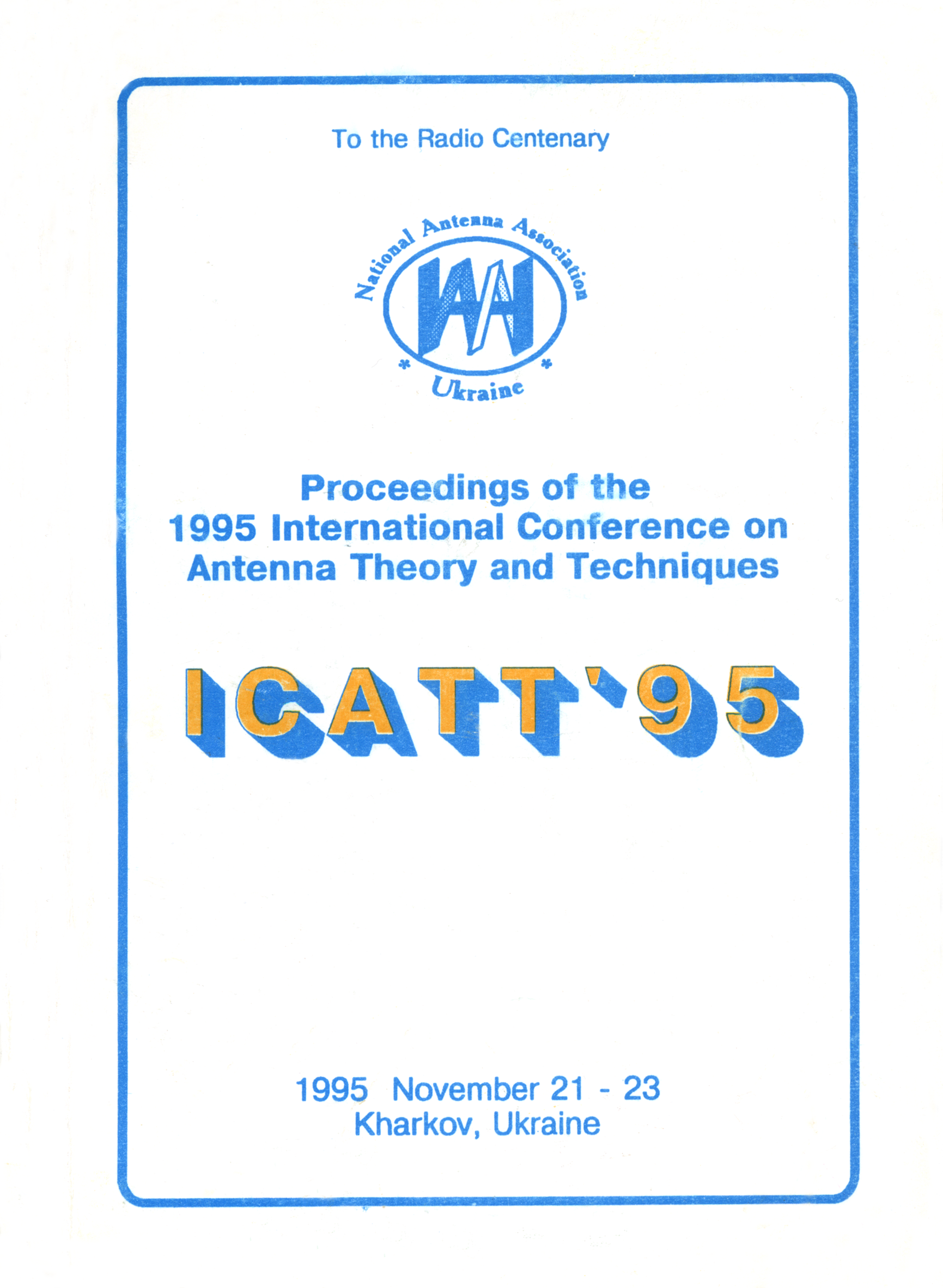Twist-effect: impedance approach, designs, applications
DOI:
https://doi.org/10.1109/ICATT.1995.1234118Abstract
The statement and research results for the broadband effect of polarization plane rotation by 90° at the scattering on various anisotropic (such as corrugated, wire, gyrotropic, microstrip) structures are discussed. On the first stage of research the impedance approach was used, with structure properties modeled by an equivalent impedance tensor Z = ||Zpq ||, p, q = l, 2. For a simple shape of Z-coating the necessary and sufficient conditions of the invariant to illumination angle twist-effect taking place were defined in the class of unreciprocal and reciprocal covers, for any linear polarization of the incident field. It is shown that Z should belong to the deviator subset Zpp = 0, det{Z} = 1, and to be determined by a single real parameter. For arbitrary cylindrical body with such a twist-cover, two theorems about its equivalent properties are proven. First, a uniform twist-cover is a model of the Makdonald black body with the same contour of cross-section in the sense of equivalence of amplitude scattering patterns for the corresponding polarization. Secondly, backscatter radar cross section of the twist-cover for the corresponding polarization asymptotically equals zero, and for the orthogonal polarization is equal to the radar cross-section of a similar metallicbody, irrespectively of the cross section contour and illumination angle.
On the second stage the impedance properties of various structures are investigated by a rigorous and approximate approach. The designs, numerical and experimental characteristics of twist-coatings on the basis of twin-ridged and grid-dielectric structures, dipole and microstrip arrays (MA) are considered. The common nature of their frequency properties, broadbandness (in the basic subrange up to octave), availability of up to 3 additional subranges, opportunity of work in decimeter and EHF ranges (with the level of polarization losses not worse then 15 dB) is noted.
On the third stage the opportunities of realization of a controlled twist-effects with the aid of thin gyromagnetic layers on a Z-substrate, and MA with controlled Z-cells are shown. The application possibilities of twist-covers in scanning reflector antennas, radar targets and buoys, for the distortion of radar images of objects are discussed.

